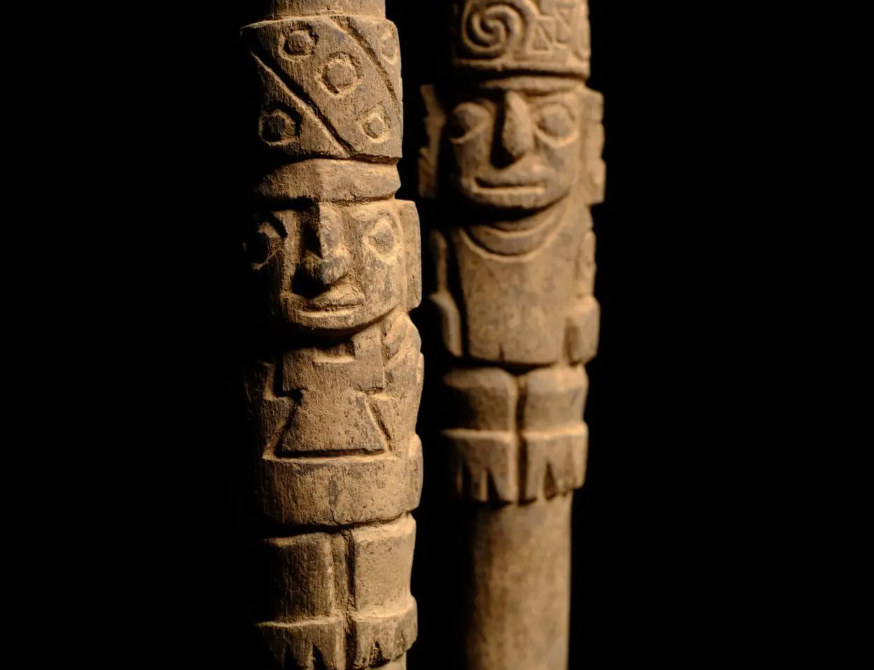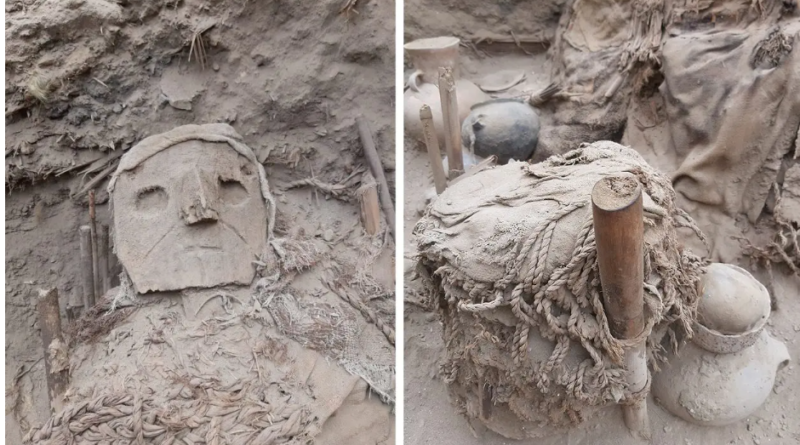Archaeological Marvel: Over 70 Burial Bundles with Carved Masks Unearthed at Pachacámac, Peru
In a remarkable discovery, archaeologists from the PUCP Archaeology Program “Valley of Pachacámac” have revealed more than 70 intact burial bundles adorned with intricately carved masks at the ancient site of Pachacámac in the Valley of the Lurín River, southeast of Lima, Peru. The site, dating back to around AD 200 and initially settled by the Wari civilization, offers a captivating glimpse into the burial practices of the Middle Horizon era.
Pachacámac, named after the creator god Pacha Kamaq, features pyramids, plazas, cemeteries, and a sacred zone housing the Painted Temple, the Temple of the Sun, and the Old Temple of Pachacamac. The recent excavation results, unveiled on the Archeowieści blog by the Faculty of Archaeology at the University of Warsaw, showcase over 70 burial bundles dating from the second half of the Middle Horizon (AD 800–1100).
These burial bundles, discovered either individually or in clusters at the base of the Painted Temple, are particularly notable for featuring “false head” masks crafted from carved wood and ceramics—a distinctive burial custom of the Wari culture. Professor Makowski, leading the excavation, noted, “In the pre-Hispanic Andes, no-one died; everyone was predestined to continue living in the parallel world of their ancestors.”

Excavations also brought to light wooden staffs adorned with depictions of Wari elite wearing Tiwanaku-type headgear. These staffs were found in a votive deposit covered with a layer of oyster shell fragments imported from Ecuador. The Wari, known for their reverence of the Staff god, a chief creator deity, depicted this god in various art forms, including stone, textile, and ceramics. Some scholars suggest that variations of the Staff God could represent Viracocha or Thunupa, serving as precursors to the Inca principal gods—the Sun, Moon, and Thunder.
This archaeological revelation not only enriches our understanding of Wari burial practices but also offers insights into the religious and cultural significance of Pachacámac, making it a pivotal site in the exploration of ancient Andean civilizations.




